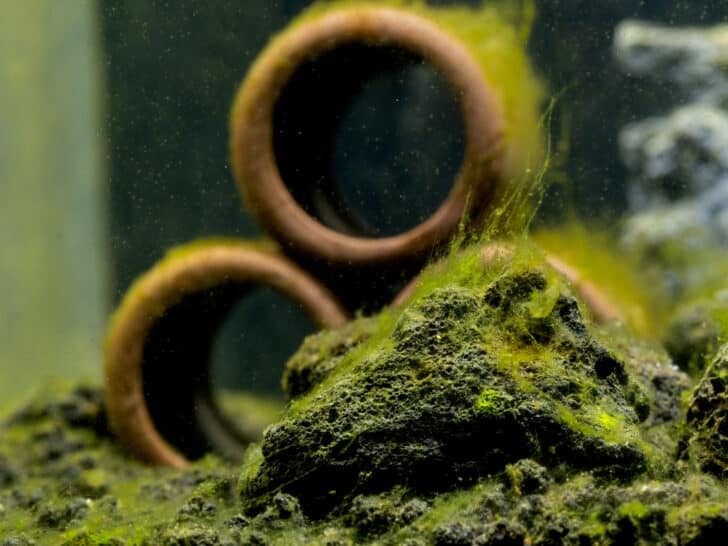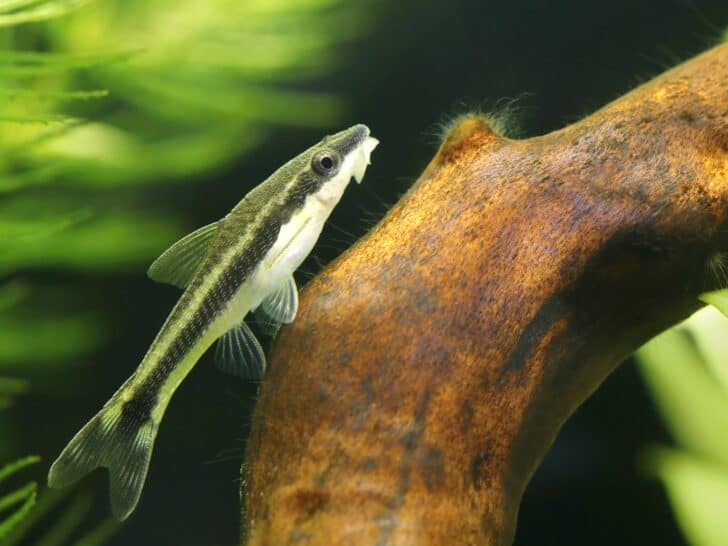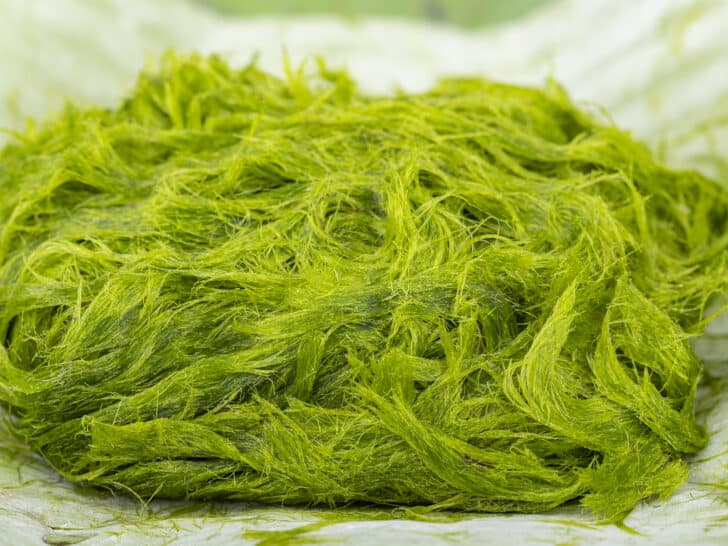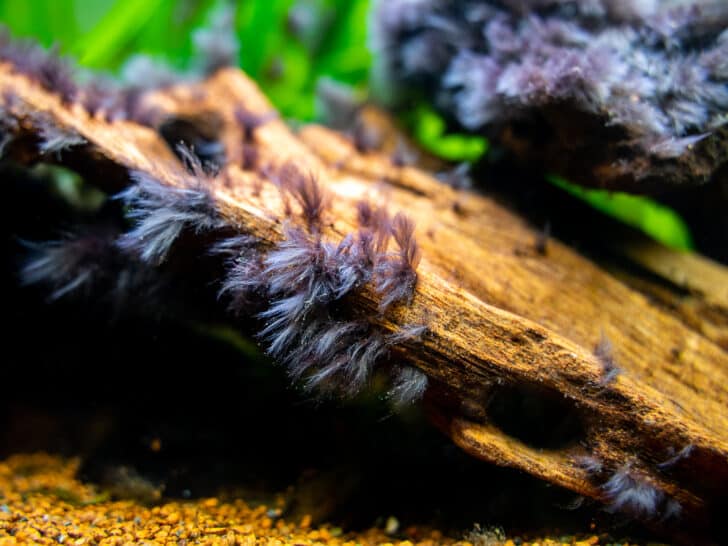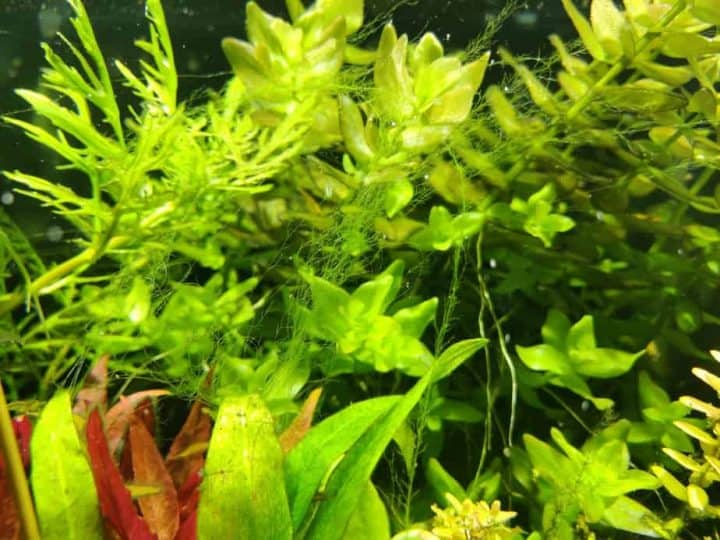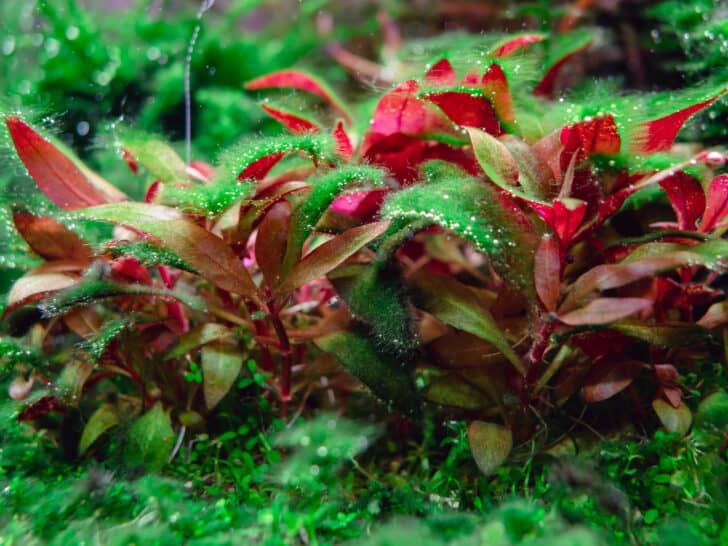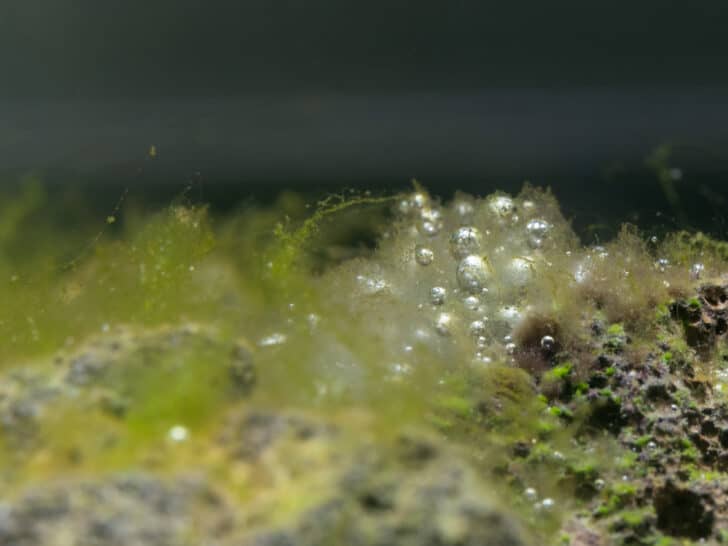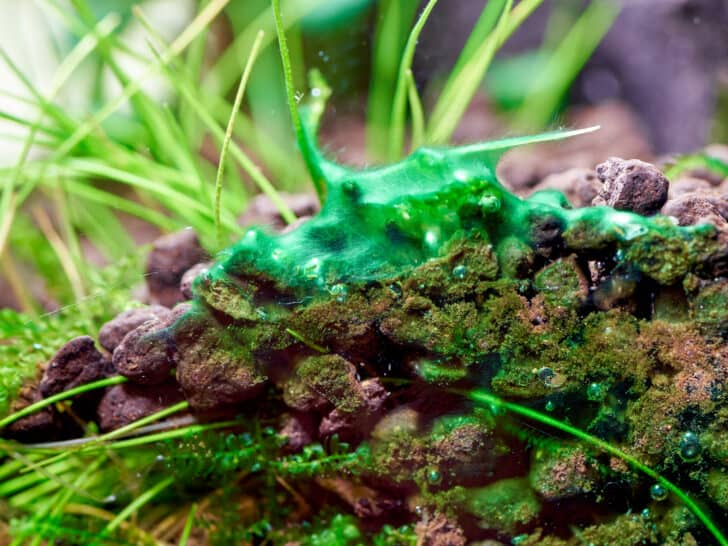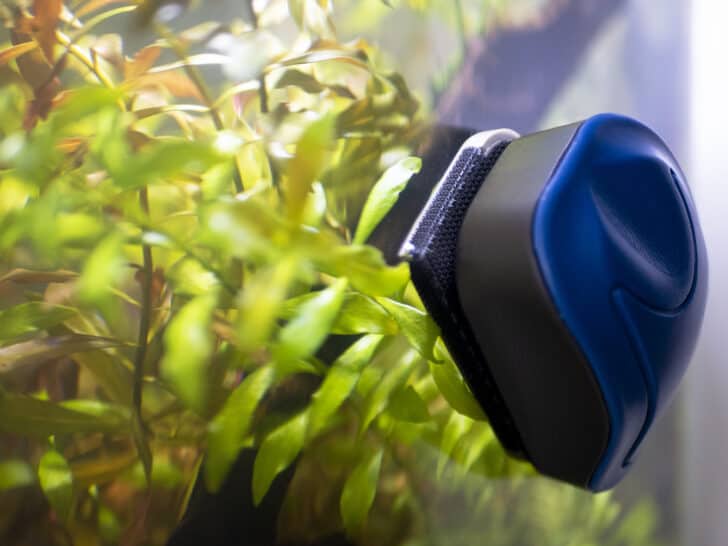One of the scariest things that ever happened to me is waking up one morning and seeing that my aquarium water was totally green. I was able to find out what causes this type of algae to occur, and how to quickly get rid of it.
Quick Answer
To fix a green water algae bloom in your aquarium, try blacking out the tank for a few days, use a UV sterilizer to kill the algae, add algae-eating fish into your aquarium, use aquarium algae inhibitors, and make sure that your filter is running properly.
If you find yourself having green water problems in your aquarium, keep reading, because I’m about to provide you with all the information you need to take care of this issue once and for all.
What Is Green Water Algae and What Causes It?
One of the major issues with green water algae is that it is by far one of the most difficult types of algae in an aquarium to deal with.
The reason for this is because this type of algae is actually composed of single-celled phytoplankton, which are free-floating, and they replicate extremely quickly.
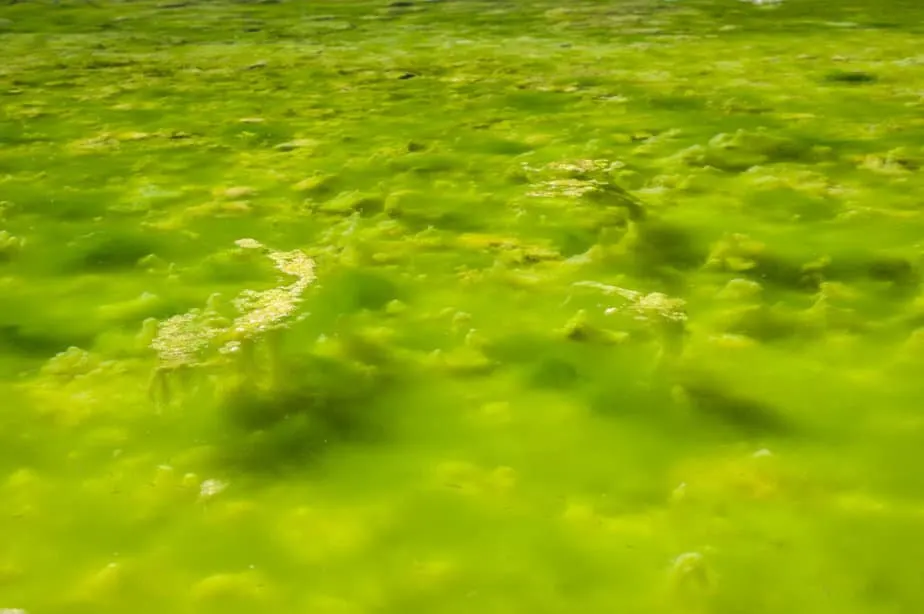
This means that unlike other types of algae that grow on aquarium decorations or glass, it just floats in the water column, so it can’t just be scraped away. It doesn’t really grow on the surfaces in your aquarium. Furthermore, it also replicates so quickly that performing water changes in an attempt to remove the algae is generally futile.
There are a few main causes of green water algae, such as an excessive amount of nutrients being present in the tank, as well as ammonia. This type of algae also tends to grow really well when it receives a lot of sunlight. A combination of sunlight and very nutrient or ammonia rich water can cause green water to occur.
Ways to Control a Green Algae Bloom in Your Aquarium
Although performing weekly water changes won’t make a big difference here, it’s definitely a good place to start. The more of a dent you can put in the algae population in your aquarium, the better. However, weekly water changes won’t totally take care of the issue, which means that you’ll have to employ the various methods I’m about to discuss below.
1. Black Out the Tank
One of the best ways to get rid of a green algae bloom in your aquarium is to black out the tank. This means that you have to put something like cardboard or paper over top of the tank, and line the sides of the tank. Even newspaper will do just fine.
The main point here is that you are aiming to block out as much natural sunlight from getting to the tank as possible. If you can manage to reduce the amount of sunlight being provided to your tank by 100% for at least three days, it should take care of the algae bloom.
However, some algae blooms can be extremely stubborn, which means that it may take up to a week of blocking light from the tank for this method to work.
Something else to consider here is that blocking all light up from your fish tank is not fantastic for your plants or for your fish. This is a rather extreme method, although it is generally considered to be the best one for killing green algae naturally.
This is especially the case if you don’t plan on using any algae inhibiting chemicals in your aquarium, which can admittedly be detrimental to the health of your fish and other plants.
2. Use a UV Sterilizer
Using a UV sterilizer, otherwise known as an ultraviolet sterilizer, is a fantastic way to kill algae. It is interesting to note how algae requires sunlight to grow, but a UV sterilizer can kill it.
This is because a UV sterilizer emits a very high dose of ultraviolet rays, which pierce the outer layer of the algae and break down its chemical bonds, therefore preventing it from being able to reproduce, effectively killing it in the process.
UV sterilizers are perhaps one of the best methods at your disposal on this front, especially because they provide you with ongoing protection. If you always use a UV sterilizer on your water, not only will it kill algae currently there, but also prevent it from blooming in the future.
The only issue with UV sterilizers is that they can be a little bit expensive, although I think it’s well worth the cost considering the amount of good they can do for any aquarium.
3. Get Some Algae Eating Fish
There are also a few types of fish that are known to eat this type of algae, particularly tangs and blennies. There are also some types of sea urchins, crabs, and snails that will feed on this type of algae.
While this solution can definitely put a bit of a dent in the algae population in your tank, it certainly won’t take care of the issue.
Once again, this is because this type of algae is free-floating, which means that your fish will never be able to eat all of it out of the tank. That said, when used in combination with the other methods listed here today, you should be able to control green water algae blooms in your fish tank.
4. Maintain or Replace Your Filter
One of the best things you can do on this front is to make sure that your filter is working properly. No aquarium should go without a filter. First and foremost, the biological filtration aspect in your filtration unit helps to break down ammonia and other nutrients that algae require to grow.
Therefore, if you make sure that your filter is properly maintained, that it is functioning as it should be, and that it performs all three major types of water filtration, it should remove the nutrients that algae needs to thrive.
If you remove all of the food sources that algae requires, it won’t be able to grow anymore, and will eventually die off.
On that note, if the mechanical filtration aspect of your filter is good enough, it should also be able to remove some of the green algae particles from the water as well. Having a good aquarium filter that functions properly is extremely important on many fronts, not just in terms of algae.
5. Use Algae Inhibitors
Algae inhibiting chemicals generally don’t kill algae that is already present in the tank. However, algae inhibitors can be beneficial in terms of preventing algae already present from multiplying further.
Although this solution doesn’t kill existing algae, it will help prevent the problem from getting even worse.
That being said, these chemicals can be quite potent, and sometimes pose certain risks to your fish and the plants inside of the aquarium. Therefore, in most cases, we would only recommend the use of algae inhibiting chemicals as a last resort.
Conclusion
By making sure you have a functioning filter, blocking out the light from your tank, using a UV sterilizer, and maybe adding a few algae-eating fish and critters into the tank, you should be able to take care of that pesky green algae bloom.

